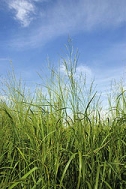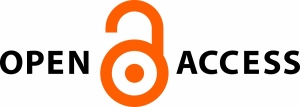
Materials on the subject of cultural (including racial, ethnic, minority, and religious) diversity in health care can be found a variety of ways.
Try keyword searches:
| cultur* AND competent* AND health |
| nurs* AND religion |
| nurs* AND culture* |
| nurs* AND diversity AND cultur* |
| (transcultural OR multicultural) AND (nurs* OR treatment) |
Try subject searches:
| transcultural nursing |
| transcultural medical care
|
| social medicine |
| ethnic groups -- medical care |
| minorities -- medical care |
| health -- religious aspects
|
Or, use a subject search for the country or ethnic group being researched and select appropriate sub headings, such as social life and customs, social conditions, health beliefs and practices, medical practices and treatments, or health practices. Medical practices or health traditions may also be a chapter or section in general books on the country or ethnic group of interest or in health professional or nursing books (for example, try the subject: nursing assessment). In these books, consult the index at the back of the book for specific traditions or practices
These are but a few of numerous books pertaining to cultural diversity and health care. Check the Library Catalog for item location within the Library (i.e. Ebook, General, Circulation Desk, Course Reserves).
Achieving cultural competency: a case-based approach to training health professionals
RA418.5.T73 A24 2009
Bilingual health communication: working with interpreters in cross-cultural care
RA418.5.T73 2016
Caring for Hindu patients
RA485 .C37 2008
Caring for patients from different cultures, 5th ed
RT86.54 .G35 2015
Cultural diversity in health and illness
RA418.5.T73 S64 2017
Cultural perspectives on mental wellbeing: spiritual Interpretations of symptoms in medical practice
RA418 .T63 2017
Culturally competent care
RT86.54 .C858 2011
Encyclopedia of world cultures
E-book
Essentials of health, culture, and diversity: Understanding people, reducing disparities
RA418 .E327 2013
Global health care: issues and policies
RA441 .G573 2017
Handbook of religion and health, 2nd ed.
BL65.M4 K597 2012
Health disparities, diversity, and inclusion: context, controversies, and solutions
RA563.M56 R67 2018
Leininger's culture care diversity and universality: a worldwide nursing theory
RT86.54 .C85 2015
Providing health care in the context of language barriers: international perspectives
R119.5 .P76 2017
Religion: A clinical guide for nurses
E-book
Spirituality in nursing: standing on holy ground
RT85.2 .O37 2018
Teaching cultural competence in nursing and health care: inquiry, action, and innovation
RT86.5 .J442 2016
Transcultural health care: a culturally competent approach
RA418.5.T73 T73 2013
Transcultural concepts in nursing care
RT86.54 .A53 2016
Transcultural nursing: Assessment and intervention
RT86.54 .T73 2017
CultureGrams
Culturegrams is a core reference resource on understanding the world's peoples through the documentation of the unique details of their customs, traditions, and daily life. Covered topics include diet and health.
These are but a few of COD Library's multi-media resources pertaining to cultural diversity and health care. Check the Library Catalog for item availability.
Competent care in a culturally diverse nation (DVD 30 min.)
CIRC DESK RT86.54 .C667 2012 & Streaming video
Adapts care interventions to the cultural needs and preferences (ethnic and religious beliefs, values, and practices) of diverse clients. Provides practical and effective methods of recognizing and dealing with the special needs of different cultures
Cultural awareness in healthcare. / Understanding the need (DVD 17 min.)
CIRC DESK RA418.5.T73 C843 2014 pt.1
Discusses the importance of cultural awareness in the healthcare field. Explains some of the cultural differences that exist among patient populations. Examines some of the major cultural awareness studies that have been completed over the past 60 years, as well as the components of several key models that are designed to foster cultural awareness within the healthcare system
Cultural awareness in healthcare. / An action plan (DVD 17 min.)
CIRC DESK RA418.5.T73 C843 2014 pt.2
Discusses the importance of cultural awareness in the healthcare field. Explains the importance of providing culturally and linguistically appropriate care. Describes the CLAS standards put forth by the U.S. Department of Health and Human Services. Outlines the three categories within the CLAS standards: culturally aware care, language access, and organizational support. Discusses how to establish and implement an action plan that recognizes and enforces the CLAS standards
Cultural awareness in healthcare. /Your practice (DVD 18 min.)
CIRC DESK RA418.5.T73 C843 2014 pt.3
Describes the importance of cultural awareness in the healthcare field. Discusses the importance of providing culturally and linguistically appropriate care. Explains key, specific ways for providing appropriate care to different ethnic groups, including people from Eastern Europe, the Middle East, Asia, and Latin America
Cultural issues in the clinical setting: Series A and B (1 VHS + 1 CD-ROM 70 min.)
GENERAL RA418.5.T73 C86 2002 & RA418.5.T73 C86 2002 CD-ROM
SUMMARY: Contains ten trigger "case studies," five of which deal with obstetrical themes, such as lesbian parents; Hmong birth practices; gender and acculturation issues in Iranian immigrants; a Latina diabetic in labor; and a circumcised Somali woman in labor. Other issues covered include problems with using family interpreters, Southeast Asian refugee psychosomatic issues, sickle cell problems with a black teenager in the E.R., conflicting cultural values between parents and physicians in a pediatric asthma case, problems with a digital rectal exam with a black male patient, and a gay teenager coming out to his family practice physician
CONTENTS: Series A : Diabetic complicance - Latino (Scene A 7:15 Scene B 9:14) -- Sickle cell case in the ER (4:43) -- Pediatric asthma (7:09) -- A somatic complaint (6:07) -- Prostate (3:55) -- A gay adolescent (11:19) -- Series B : Beyond obstetrics : birthing issues - four cultural perspectives (18:20)
The multicultural health series: part 1 (1 VHS + 1 CD-ROM 40 min.)
GENERAL RA418.5.T73 M95 pt.1 2003 & RA418.5.T73 M95 pt.1 2003 CD-ROM
Topics include changes in an elderly patient's care provider, an elderly Navajo faces surgery, an Orthodox Jewish couple has a Saturday baby, and a pediatrician learning to use telephone interpreting
CONTENTS: Walking in beauty (12:14) -- Day of rest (9:49) -- Changes (8:48) -- The voice inside the phone (9:09)
The multicultural health series: part 2(1 VHS + 1 CD-ROM 48 minutes, 19 seconds)
GENERAL RA418.5.T73 M95 pt.2 2004 & RA418.5.T73 M95 pt.2 2004 CD-ROM
SUMMARY: Topics include an American physician mediates issues around the death of a young Malaysian Chinese girl with her family, a physician assistant confronts the family abuse of a South Asian woman, a middle-class white male physician and a working-class male heart attack patient experience communication difficulties, a medical team works through compliance and medication issues with Afghan refugees, a doctor finds that his semi-literate but well-intentioned Columbian immigrant patient and her husband are using a plethora of South American drugs in addition to their prescribed medications, and a physician assistant helps his pregnant Latina patient find a way to deal with her STD re-infection problem
CONTENTS: Rebirth (11:00) -- A pocketful of medicines (5:43) -- Proof (6:52) -- Between two worlds (8:37) -- Lupe's dilemma (8:07) -- Lost oppportunities (7:52)
Worlds apart (4 VHS tapes (46 min., 54 sec.)
CIRC DESK RA448.4 .W67 2003
Shows how cross-cultural conflicts arise and how they can affect health decisions and outcomes. Discusses language barriers, cultural and religious beliefs, racial and ethnic disparities in health care, and reasons for non-adherence to medications.
CONTENTS: Mohammad Kochi's story (14 min, 6 sec.) -- Justine Christena's story (11 min., 20 sec.) -- Robert Phillip's story (18 min., 8 sec.) -- Alicia Mercado's story (11 min., 20 sec.)
In the
Nursing Education in Video database, search for "
cultural awareness" to retrieve and view current streaming videos. (This database includes: full transcripts of each video program that are keyword searchable, easy playlist and clip making functionality, permanent embeddable URLs for easy use in online courses).
American Indian Health
"Sponsored by the National Library of Medicine, this site is designed to bring together health and medical resources pertinent to the American Indian population including policies, consumer health information, and research. Links are provided here to an assortment of documents, Web sites, databases, and other resources."
ANA (American Nurses Association) Nursing World: Diversity Awareness
Provides diversity information in the areas of obesity/bariatrics, geriatrics, health insurance and healthcare access, LGBT individuals and communities, mental health, racial and ethnic minorities, and faith, religion & spirituality
Culture Cues™
"Tip sheets for clinicians, designed to increase awareness about concepts and preferences of patients from the diverse cultures served by University of Washington Medical Center."
Diversity RX
Provides resources and information on how to meet the language and cultural needs of minorities, immigrants, refugees, and other diverse populations seeking health care.
EthnoMed
Sponsored by the Harborview Medical Center at the University of Washington in Seattle, contains information about cultural beliefs and medical issues pertinent to the health care of recent immigrants to Seattle. Includes cultural profiles for Hispanic/Latinos, Iraqis, Eritreans, Somalis, Cambodians, Vietnamese, and others as well as foreign language patient materials
Gay & Lesbian Medical Association (GMLA)
GLMA's mission is to ensure equality in health care for lesbian, gay, bisexual and transgender individuals and health care providers
Health Care and Religious Beliefs--Alberta [Canada] Health Services
A 2009 fifty-page PDF document containing concise overviews of 14 religions' particular spiritual and religious requirements pertaining to healthcare
HealthReach: Health Information in Many Languages
From the National Library of Medicine, "Discover resources, cultural backgrounds, clinical tools, and guidance about specific immigrant, refugee, and asylee populations."
Multi-Cultural Resources for Health Information
From the U.S. Department of Health & Human Services and the National Library of Medicine, this directory of web resources for health information covers many areas of interest to those serving diverse populations. Topics include cultural competency, data, translation and interpretation, funding, law, refugees and more.
National LGBT Health Education Center: Resources and Suggested Readings
The National LGBT Health Education Center provides educational programs, resources, and consultation to health care organizations with the goal of optimizing quality, cost-effective health care for lesbian, gay, bisexual, and transgender (LGBT) people.
Office of Minority Health
The Office is dedicated to improving the health of racial and ethnic minority populations including: African Americans, Hispanic Americans, American Indians and Alaska Natives, Asian Americans, Native Hawaiians, and Pacific Islanders.
The Provider's Guide to Quality & Culture
Joint project of Management Sciences for Health (MSH), United States Department of Health and Human Services Health Resources and Services Administration and Bureau of Primary Health Care. "This Web site is designed to assist healthcare organizations throughout the US in providing high quality, culturally competent services to multi-ethnic populations."
SPIRAL (Selected Patient Information Resources in Asian Languages)
Maintained by Tufts University Hirsh Health Sciences Library, a collection of links to Asian-language patient care documents that have been created by authoritative sources and are freely available on the World Wide Web. Links are organized by topic and language.
Think Cultural Health
Sponsored by the Office of Minority Health, this site offers the latest resources and tools to promote cultural and linguistic competency in health care including the National CLAS Standards. Access free and accredited continuing education programs as well as tools to help provide respectful, understandable and effective services.
Transcultural and Multicultural Health Links
Links to general resources dealing with transcultural health and health care for various religious faiths including the Amish, Jehovah's Witnesses, and Islam, and ethnic groups, including Hmong, Thai, and Cambodian


